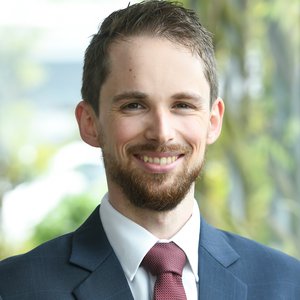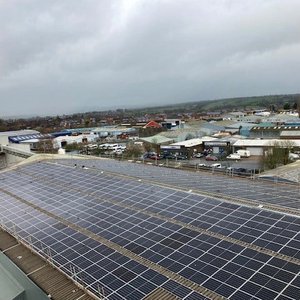Final Meeting of the AQUAMAX Sustainable Aquafeeds Project
"Sustainable Aquafeeds to Maximise the Health Benefits of Farmed Fish for Consumers’ The final meeting of “AQUAMAX” took place successfully on the 29th June in Brussels. More than 70 people, representing top European Research Institutes, Universities, European Institutions, NGOs and the European aquaculture Industry, participated in the event.
“AQUAMAX” was financed in the framework of the European Commission’s initiatives aiming to unlock the potential for aquaculture development in Europe. The project started in March 2006 and involved 32 partners throughout Europe as well as from China and India.
In 2008, global seafood consumption was estimated at 143 million tons. With fisheries supplies stable at around 90 million tons, it is aquaculture that provided 53 million tons of seafood. Farmed products now represent 47% of the seafood consumed by humans and, with an increasing global population, future demand is certain to require further growth in aquaculture production, which has to be achieved in a sustainable manner.
One of the challenges faced is the supply of fishmeal from fisheries used for the production of fish feed; 30 years ago less than 10 percent of global fishmeal was used in aquafeeds whereas in 2007 over 60% of global fishmeal was employed.
“AQUAMAX” addressed this challenge by developing fish feeds with a maximum replacement of fish meal and fish oil by sustainable, alternative feed resources. These feeds were used to produce healthy and minimally contaminated fish that are highly nutritious, beneficial to human health and acceptable to consumers.
The project included advanced research on fish nutrition, human nutrition, toxicology and the public perception of farmed fish. The work was done under four different programmes, involving scientists from both natural and social sciences backgrounds.
At the final workshop, the programme directors presented the results of their work and debated the attainment of the goals established for the project.
Program 1: Development of sustainable aquafeeds Prof. Sachi Kaushik (INRA – France) coordinated this programme and he reported that new diets, with a low content of fish meal and fish oil, were developed for feeding Atlantic salmon, rainbow trout, gilthead sea bream, common carp and Indian major carp. These new “AQUAMAX” diets were tested in short and long-term trials, in laboratory and field trial conditions.
Moreover, the project advanced analytical methodology in order to detect very low levels of contaminants and applied these upgraded techniques to the alternative feeds and to the farmed fish. Persistent organic pollutants (POPs) analysed in feed ingredients and fillets were detected only at trace levels - well below EU maximum permitted levels.
Prof Kaushik confirmed that both fish meal and fish oil in feeds can be substantially replaced, without affecting the growth performance of the fish and their feed/nutrient utilisation, thus reducing the “Fish-In Fish-Out (FIFO)” ratios.
Consumer evaluation studies, made in Greece and France, on “AQUAMAX” sea bream and trout, reared on the new diets, showed high acceptance and appreciation of these fish. In both studies, consumers’ satisfaction was at least equal or even better for these fish, compared to fish produced on standard feeds.
The conclusion is that the substitution of fish meal and fish oil with vegetable alternatives is a fully feasible option for widespread implementation in aquaculture in the near future.
Program 2: Assessment of the human health benefits of fish produced using “AQUAMAX” feeds Prof. Philip Calder (University of Southampton – UK) explained that the development of tailor-made salmon within “AQUAMAX”, with minimal contaminant levels and a high content of Ω-3 fatty acids had enabled, for the first time, a nutritional intervention study on oily fish consumption during pregnancy.
The results of this study (SiPS – Salmon in Pregnancy Study) showed that when pregnant women (who do not regularly eat oily fish), eat two portions of salmon per week, the intake of long chain Ω- 3 fatty acids (EPA and DHA) is significantly increased, as well as the levels of selenium and vitamin D which are also found in oily fish. They have higher levels of long chain Ω-3 fatty acids in their bloodstream, as will their baby.
Since these key functional fatty acids decline in the mothers’ blood during pregnancy, due to the demands of the growing baby, this is important. This dietary change can thus enable the mother to supply better these nutrients to the developing baby before birth. Eating salmon during pregnancy also resulted in a higher content of EPA and DHA in breast milk, allowing an improved supply of these fatty acids to the new-born baby.
Program 3: Safety of the fish produced using “AQUAMAX” feeds Presented by Prof. Anne-Katrine Lundebye Haldorsen (NIFES – Norway), this programme had investigated the safety of fish farmed on the new contaminant-free feeds. This was achieved through the analysis of the direct toxic effects of contaminants and the modulating effects of beneficial nutrients in fish.
“AQUAMAX” developed innovative food safety toxicity tests by identifying and characterising signature effects of key toxicants in fish; the actions of key toxicants and their subsequent amelioration by fish nutrients were presented.
Prof. Lundebye explained that many nutrients in seafood may counteract the effects of environmental pollutants. For example, both selenium and Ω-3 fatty acids protected against the toxicity of MeHg (Methyl mercury). Omega-3 fatty acids also protected against the toxic effects of the brominated flameretardant, HBCD, which is commonly found in oily fish.
Moreover, “AQUAMAX” has conducted food safety tests in animals that had been fed fish reared on traditional and new feeds. Several genetic, physiological and morphometric biomarkers have been identified, which are symptomatic of exposure to environmental contaminants that are commonly found in fish.
Prof. Lundebye explained that these findings will contribute to the European Food Safety Autority’s (EFSA) work to formulate science-based dietary advice to vulnerable consumer groups, such as pregnant and lactating women and young children. This will allow the development of new methodologies for the “risk-benefit analysis” of consuming fish, whether wild or farmed.
Program 4: Consumer perception of farmed fish and a communication framework Dr. Anne Schlag (Kings College, London – UK) presented the results of this programme. Dr. Schlag explained that to understand the current public perception of consuming fish the research had looked to compare science-based risk-benefit assessments with the perceptions of the lay public.
Media coverage on farmed fish and fish farming itself was examined so as to see the different interpretations of risk and benefits and whether these reflected agenda setting within the media.
Over 1,000 media articles, published over 5 years, from Estonia, Germany, Norway and the UK were analysed, showing historical developments in reporting content.
In addition, both the awareness and the perception of the risks and benefits of consuming farmed fish and aquaculture was assessed using focus groups in 7 European capital cities. Results showed that while consumers are aware of the benefits of fish consumption (farmed or otherwise) for human health, most participants requested further information since they felt that their knowledge was limited. In particular, information was required on the labelling of farmed fish and how the sector is regulated.
Overall, consumers want more credible and balanced scientific information and a more inclusive public dialogue. Dr.Schlag stressed the importance of communicating the science in a clear and accessible way, to make the information understandable and believable to the public.
Further interventions were made on behalf of the European Commission (DG Research and DG Health and Consumers) and the European Feed Manufacturers’ Federation (FEFAC), addressing the significance of the outcomes of the “AQUAMAX” project for interests of the European institutions and the compound feed manufacturing sector.
Dr. Frans Verstraete (DG Health and Consumers) underlined the contributions of the project to the objectives of the EU food and feed legislation by addressing important challenges such as risk assessment, risk management and risk communication and challenges for enforcement. This was clearly shown by the development of reliable routine analytical methods within programme 3.
Mr. Alexander Döring (FEFAC – BE) asserted that “AQUAMAX” had contributed significantly not only to increase the knowledge in the sourcing of sustainable alternatives to fish meal and fish oil but also in giving substantial data on the positive effects of seafood in human diets. The increased knowledge on contaminants and the mitigating effect of nutrients in fish will help legislators in setting true and fair limits on contaminants, contributing to reducing restrictions on the availability of feed resources.
To learn more about the “AQUAMAX” project and to access all the presentations and project dissemination materials (including a fact sheet, technical leaflets and newsletters) , please visit the website: www.aquamaxip.eu










